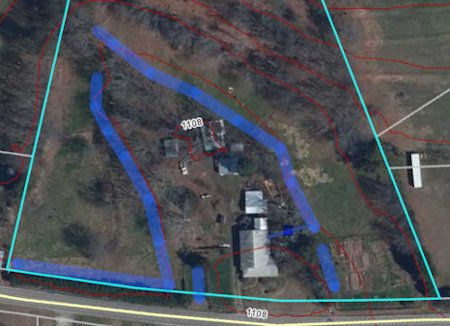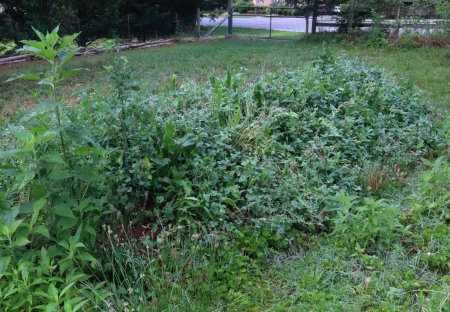My Luxear cooling blanket product review
last month went so well (thanks to you all!), that the company offered to let
me review another of their products. This time, it was an
Elegear Men's Cooling T-shirt, made with the same Arc-Chill technology that makes the blanket such a
fantastic product.
The concept of cooling clothing really intrigues me because Dan and I are
essentially outdoor people. Much of our lifestyle involves being outdoors, and
in summer, it can get pretty hot and humid out there. In winter, we can always
add layers, but in summer, there's only so much that can be taken off!
The Elegear cooling t-shirt is made of a 90% nylon/10% spandex blend. It utilizes the same
Arc-chill technology that I love about the Luxear cooling blanket. I won't
repeat myself here, but if you're interested in what my research revealed
about Arc-chill fabrics, you can find it
here. The t-shirt comes in a choice of black or white, and sizes range from medium to XX-large. For this review, I
received a medium size in black.
For my review, I tested it in both outdoor
and indoor conditions, comparing it to my usual cotton t-shirt garb.
First impressions
Upon opening the package, I discovered that the fabric was soft, silky, and
cool to touch.
The black, especially, looks more like a dress t-shirt than a
work t-shirt. My first thoughts were that it would be perfect for any outdoor summer event for which I wanted to be cool, comfortable, and dressy casual:
street festivals, outdoor concerts or parties, Shakespeare In The Park, sporting events, etc.
I was very curious about the sizing, because ordering clothing online can be iffy. I usually wear a medium in a men's t-shirt, and the Elegear medium t-shirt
fit perfectly. The spandex gives it enough shape to keep it from looking
sloppy, yet it's stretchy enough to not feel tight or binding.
Outdoor test
We've mostly been in the mid-90sF (mid-30sC) in the afternoons, so that's when I tested it. I stick
to jobs I can do in the shade and thought these would be good conditions to put the cooling t-shirt through its paces.
How did it compare to a cotton -t-shirt? Was it
like wearing an air conditioner? Not the way most people like their air
conditioning! LOL. The manufacturer rates the cooling effect to be 3.6-9°F (2-5°C). Not comparable to AC, but even with an outdoor temp of 95°F (35°C), the Elegear t-shirt always felt cool to touch. I still got hot and sticky as I worked, but where the technology really shines, is when the
breezes stir. Cotton t-shirts are better than polyester, which traps heat, but cotton still blocks the breeze and it's hard to cool off. The Arc-chill fabric,
however, somehow worked with the breeze. While it's lightweight, it's by no
means flimsy and see-through. Yet I could feel the cooling breeze through the
t-shirt. That was lovely! Even better, the heat and moisture wicking effect
helped me cool and dry off quickly. I didn't feel sticky the entire time I worked outside.
Indoor test
My indoor test conditions were on the warm side as well. Summer is
preservation season, and even with a back porch kitchen, my house kitchen gets
hot. For my test, the kitchen was about 84°F (30°C), and I had the ceiling fan turned on high.
With a cotton t-shirt, I just tolerate being hot when I'm working indoors like that. The fan feels good on my bare skin, but under the shirt I'm still hot. With the cooling t-shirt, I was actually comfortable the entire time I worked in the kitchen.
Laundering
I wanted to make a special note about laundering, because the Arc-chill fabric can lose it's cooling effect if not handled properly. It's very easy, however: cool water machine wash and line dry in the shade. No clothesline? No shade? Just pop it on a hanger and hang it up in the laundry room or on the shower rod. The hardest part would be keeping track of it in the laundry to not accidentally run it through the dryer.
Conclusion
I admit, I was skeptical at first. But I gave it a fair try and discovered that the more I wear it, the more I like it. Now, if we have a forecast for another super hot day, I find myself reaching for my cooling t-shirt. I definitely want to have a couple of these in my summer wardrobe. For myself, and Dan too.
Besides the uses mentioned above, I think folks who are trying to cut back on their air conditioning might want to give this t-shirt a try. It could definitely help under those conditions too.
Shopping link and discount coupon!
Discount Code: KTGSIXJV (for 10% off)
For me, this is another way to help beat the heat! And we certainly seem to need it this summer.




















































